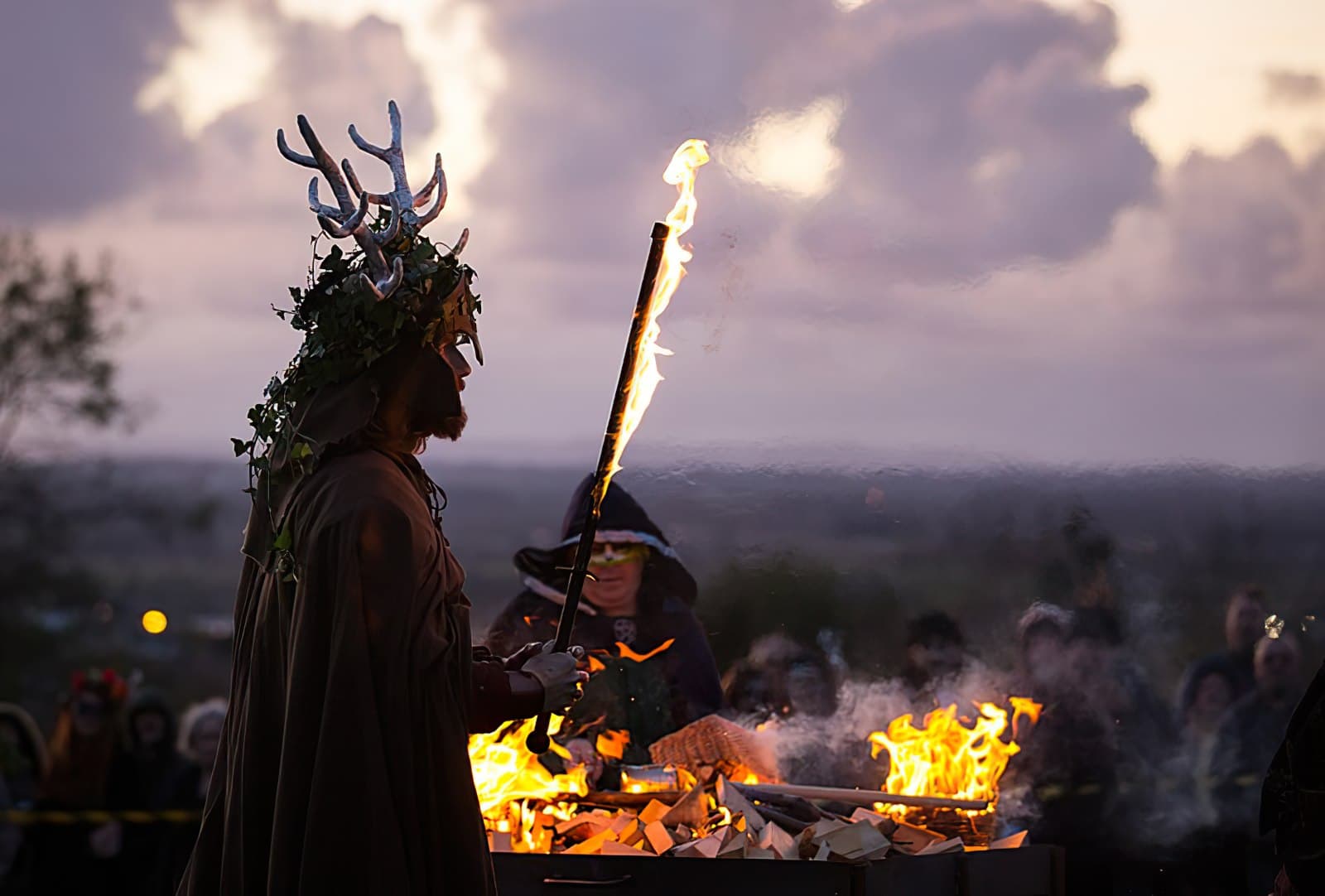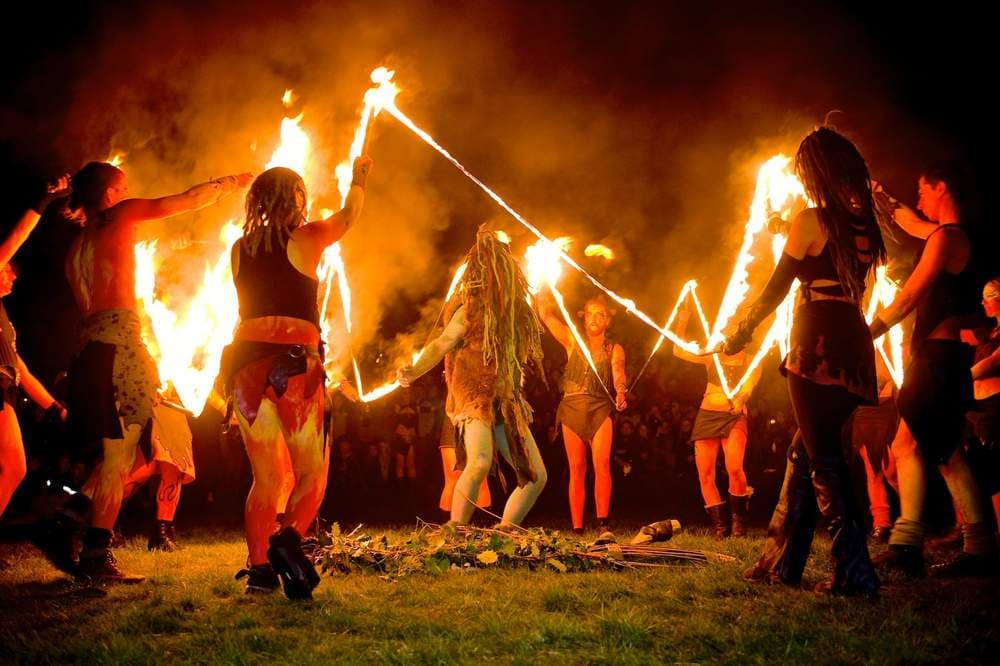
From Samhain to Halloween: The Spooky Origins and Evolution of Our Favorite Fright Night
Introduction
As the nights grow longer and a chilling breeze fills the air, Halloween approaches, bringing with it a host of spooky delights and eerie festivities. But have you ever wondered how this spine-tingling holiday came to be? The answer lies in the ancient Celtic festival of Samhain. Observed thousands of years ago, it marked the end of the harvest season and the onset of winter, serving as a time for both celebration and reflection. In this blog post, we’ll delve into the fascinating history of Samhain, exploring its origins, rituals, and the intriguing evolution that led to the modern Halloween celebrations we know and love today. So, grab a pumpkin-spiced treat, and join us on this spellbinding journey through time!
Table of Contents
The Ancient Celtic Festival of Samhain
Origins and purpose
Samhain, which means “summer’s end” in Old Irish, was an essential festival in the ancient Celtic calendar. Celebrated from October 31st to November 1st, it signified the close of the harvest season and the onset of the cold, dark winter months. More than just a seasonal marker, it was a time when the Celts believed the veil between the worlds of the living and the dead was at its thinnest. This allowed spirits, both good and evil, to wander the Earth and interact with the living. The festival provided an opportunity for the Celtic people to honor their ancestors and seek guidance from the otherworld. The night of Samhain was also believed to be a time of heightened supernatural activity, with the potential for divination and glimpses into the future. The significance of Samhain in Celtic society cannot be understated, as it served both practical and spiritual purposes, fostering a sense of connection with the past and the cycles of nature.
Traditions and rituals
As Samhain was a time when the living and the dead could commune, the Celts practiced various rituals and traditions to connect with the spirits and ward off evil forces. One such custom involved lighting massive bonfires, which served as a guiding light for the souls of the departed and symbolized the sun’s life-giving energy during the dark winter months. People would also dress in costumes, usually made from animal skins and heads, as a way to disguise themselves from malevolent spirits and embody the fearsome qualities of wild animals.
During Samhain, the Celtic people would gather to make offerings of food, drink, and other items to appease the spirits and ensure a prosperous year ahead. They would also hold feasts, where places would be set for deceased loved ones to invite their spirits to join in the celebrations. Alongside these festivities, it was a time for divination, as the thin veil between worlds was believed to grant special insights into the future. People would engage in various methods of fortune-telling, such as casting stones, examining the shapes of molten lead, and interpreting dreams. These rich and varied traditions and rituals formed the core of the ancient Samhain celebration and would eventually lay the foundation for our modern Halloween practices.
Connection to the end of the harvest season and the beginning of winter
Samhain marked a crucial period in the Celtic calendar, as it symbolized the end of the harvest season and the beginning of the dark, cold winter months. This transition was associated with both physical and spiritual changes in the natural world. As the days grew shorter and the nights longer, the Celts believed that the veil between the living and the dead became thinner, allowing spirits to roam the earth more freely.
During this time, the community came together to complete the final tasks of the harvest and prepare for the winter ahead. Crops were collected, animals were slaughtered for meat, and surplus food was preserved to sustain the people through the long, cold months. These rituals and celebrations served to honor the spirits of the dead, appease the gods, and seek their blessings for a successful harvest in the coming year.
This focus on the cycles of life, death, and rebirth made Samhain a deeply spiritual and significant event in the Celtic calendar. The festival’s connection to the end of the harvest season and the beginning of winter continues to be reflected in modern Halloween traditions, such as pumpkin carving, apple bobbing, and the overall theme of transformation and renewal.

The Roman Influence and Christianization
Roman festivals that blended with Samhain history
As the Roman Empire expanded and conquered Celtic territories, their cultural practices began to intermingle with those of the Celts. Two significant Roman festivals, Feralia and Pomona, merged with the observance of Samhain, influencing its customs and celebrations.
Feralia was a festival held in late October, dedicated to remembering and appeasing the spirits of the deceased. This solemn commemoration aligned with the Celtic belief that the veil between the living and the dead was thinner during Samhain, making it an opportune time for connecting with the departed.
In contrast, the festival of Pomona celebrated the goddess of fruit and abundance. Pomona’s symbol was the apple, and her influence on the pagan rituals can be seen in various apple-related traditions, such as apple bobbing, which continues to be a popular Halloween activity today.
As Christianity spread throughout the Roman Empire and Celtic lands, it brought with it the desire to assimilate pagan festivals into Christian celebrations. In an effort to replace the pagan rituals, the Christian church established All Saints’ Day on November 1st and All Souls’ Day on November 2nd. These days were dedicated to honoring saints, martyrs, and the souls of the deceased. The blending of Samhain with these Christian observances led to the development of many Halloween customs that are still practiced today.
The Legacy of Samhain
The persistence of Samhain-related beliefs and practices in modern Halloween
The legacy of Samhain lives on in modern-day Halloween. Many of the ancient beliefs and practices associated with it have been adapted and incorporated into Halloween celebrations around the world. For example, the tradition of dressing up in costumes and masks can be traced back to the Celtic practice of donning disguises to ward off malevolent spirits.
Similarly, the practice of carving pumpkins into jack-o’-lanterns can be traced back to the Samhain tradition of carving turnips into lanterns to guide ancestral spirits back to the otherworld. By exploring the origins of Halloween, we gain a deeper understanding of the customs and traditions that make this holiday so beloved and enduring.
The revival of ancient traditions in contemporary pagan and spiritual communities
Samhain has continued to inspire people to this day, particularly in pagan and spiritual communities. Many modern-day Wiccans and other pagan groups see this ritual as a time for celebrating ancestors and connecting with the spirit world. Some also incorporate traditional practices such as lighting bonfires or leaving offerings for the dead.
In recent years, there has been a growing interest in reviving and preserving ancient customs associated with Samhain, such as divination rituals or the creation of protective talismans. This renewed interest reflects the enduring legacy of Samhain and its lasting impact on Halloween and contemporary culture.
The ongoing significance of Samhain in popular culture
As an ancient festival with a rich history and unique traditions, it’s no surprise that Samhain has influenced popular culture in a variety of ways. From films and television shows featuring supernatural elements to music and literature that explore themes of death and rebirth, the pagan ritual continues to captivate the imaginations of people around the world.
Whether we realize it or not, many of the Halloween traditions we enjoy today have their roots in this ancient Celtic festival, reminding us of the enduring legacy of this important celebration.
Conclusion
In conclusion, the festival of Samhain, an ancient Celtic celebration of the end of the harvest season and the beginning of winter, has a rich and fascinating history that has significantly influenced the modern-day holiday of Halloween. Over time, this festival blended with Roman and Christian traditions, ultimately leading to the emergence of the holiday as we know it today. Despite this evolution, many of the ancient customs and beliefs associated with it continue to persist in modern Halloween celebrations, and its legacy can still be seen in popular culture and contemporary spiritual communities. Understanding the origins and significance of Samhain history allows us to appreciate the true depth and complexity of this holiday, and to connect with the ancient cultural traditions that continue to influence us to this day.
Join the Horrifiq cult and never miss a scare!
Latest Halloween trends, goriest new items, Halloween sales, right in your inbox.